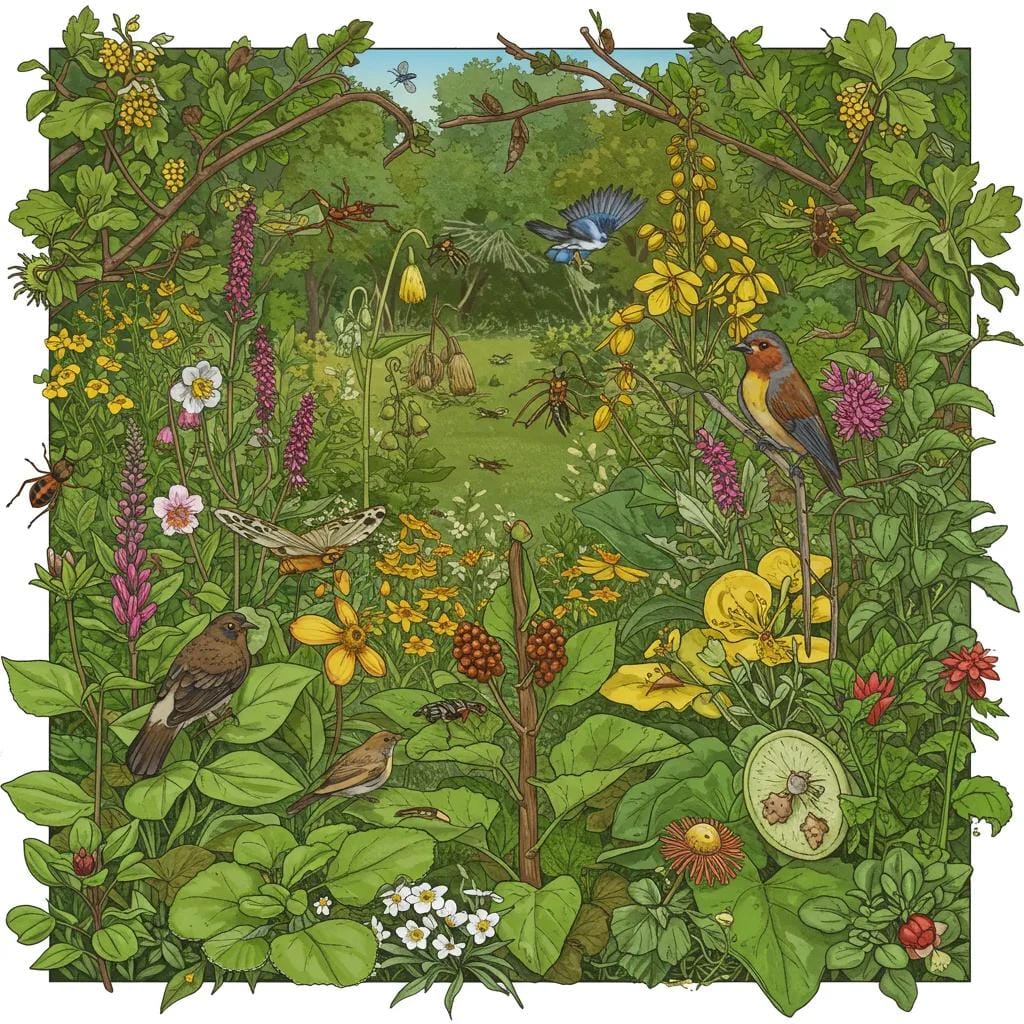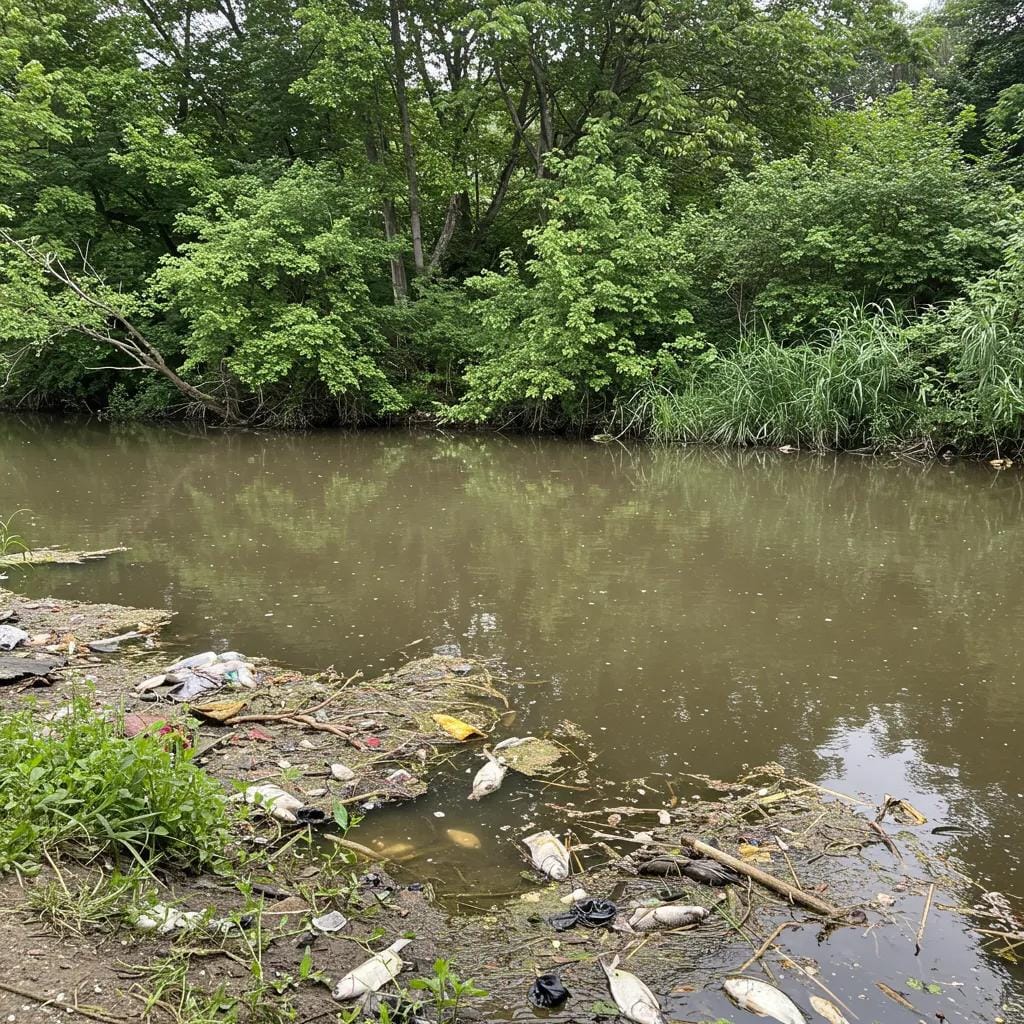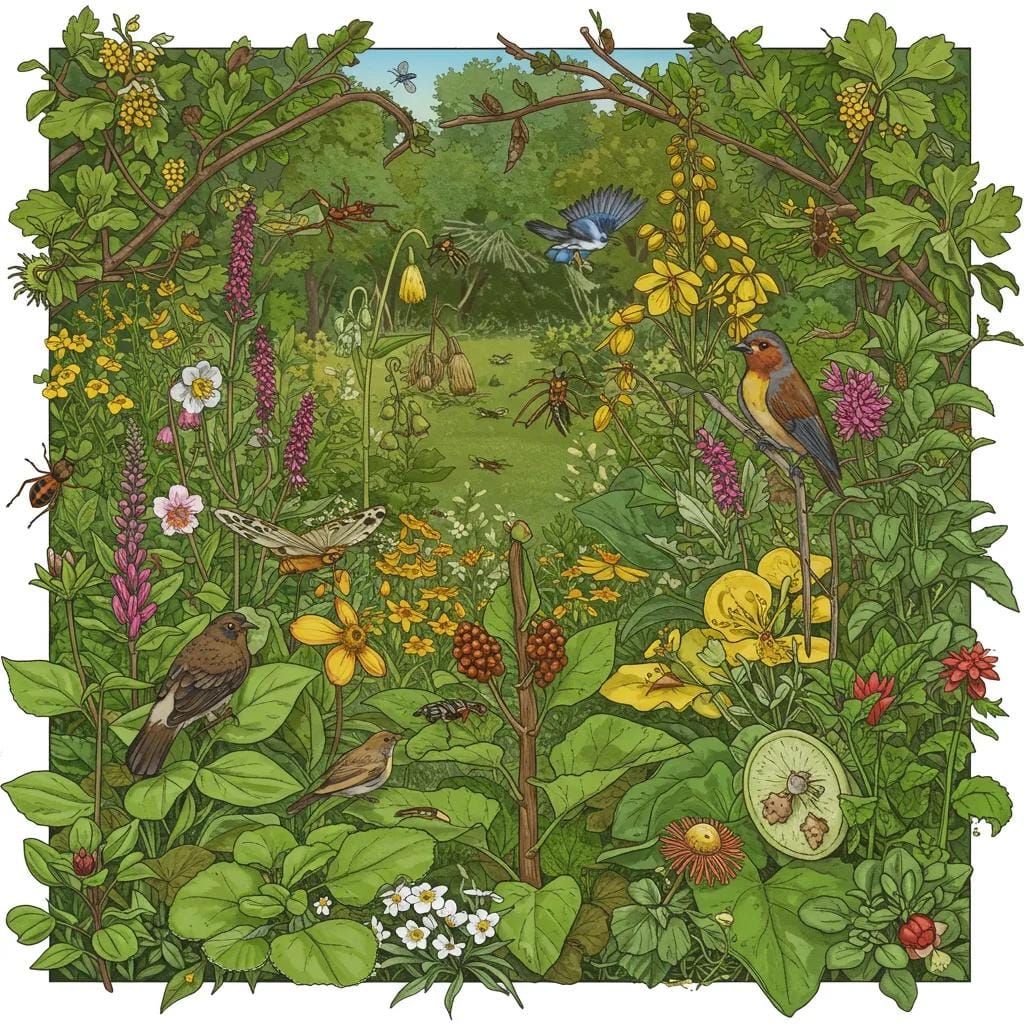
How Do the Long-Term Effects of Chemical Versus Natural Pest Control Differ on Ecosystem Health?
Chemical and natural pest control carry profoundly different legacies for ecosystem health, influencing biodiversity, soil vitality, water purity and human well-being over decades. Addressing pest outbreaks with synthetic pesticides can deliver fast knockdown but often culminates in habitat disruption, toxin accumulation and resistance challenges. In contrast, natural approaches emphasize ecological balance, leveraging biological agents and cultural practices to sustain beneficial organisms and rebuild soil microbiomes. This article clarifies ecosystem health indicators, compares chemical risks with natural benefits, explores Integrated Pest Management (IPM) frameworks, guides informed homeowner and business decisions, highlights recovery case studies and reviews emerging trends and regulations. Ecosystem Health metrics → Chemical Pest Control risks → Natural Pest Control gains → IPM balance → Decision factors → Recovery examples → Future outlook.
What Is Ecosystem Health and Why Does Pest Control Matter?
Ecosystem health describes the capacity of a habitat to maintain its functions, resilience and productivity in the face of pressures such as pest outbreaks and chemical inputs. Monitoring these systems ensures that pest management choices do not degrade biodiversity, soil fertility, water or air quality over the long term. Effective pest control that aligns with ecosystem health supports sustainable agricultural yields and protects human and wildlife populations.
What Are the Key Indicators of Ecosystem Health?
Ecosystem health is measured by biodiversity levels, the condition of soil microbiomes, water quality metrics and air purity standards.
- Biodiversity Index: A high count of species shows ecosystem resilience and stable food webs.
- Soil Microbiome Activity: Healthy microbial diversity ensures nutrient cycling and plant vigor.
- Water Quality Parameters: Measures of nitrates, phosphates and pesticide residues indicate contamination levels.
- Air Quality Indicators: Volatile organic compounds and particulate matter levels reveal chemical drift impacts.
Healthy ecosystems exhibit robust species portfolios, balanced nutrient cycles, clean waterways and uncontaminated air, all of which inform sustainable pest control planning.
How Do Pest Control Methods Influence Ecosystem Balance?
Pest control methods intersect with ecosystem components through direct mortality, habitat modification and chemical residues. Synthetic pesticides can decimate non-target organisms, disrupt soil microbial networks and pollute water bodies via runoff. In contrast, natural controls introduce predators, parasitoids or botanical agents that target pests without eroding ecological functions. Recognizing these interactions guides management strategies that preserve ecosystem services while mitigating pest damage.
Why Is Understanding Long-Term Effects Crucial for Sustainable Management?
Long-term effects reveal delayed consequences such as bioaccumulation, resistance development and loss of beneficial species that short-term trials cannot capture. Sustainable management demands foresight into these cumulative impacts to avoid costly remediation, health risks and regulatory penalties. Integrating long-term monitoring into pest control planning ensures ecosystem services remain intact for future generations.
What Are the Environmental Risks of Chemical Pest Control?

Chemical pest control relies on synthetic substances that often persist in soils, leach into waterways and disrupt non-target species. These risks accumulate over time, eroding ecosystem resilience and human safety.
How Do Synthetic Pesticides Affect Biodiversity and Wildlife?
Synthetic pesticides frequently cause blind allelopathy, killing pollinators, soil fauna and aquatic invertebrates alongside target pests.
- Direct Toxicity: Broad-spectrum insecticides reduce insect richness by up to 30% in treated zones.
- Food Web Disruption: Loss of insect prey cascades through bird and amphibian populations.
- Habitat Modification: Chemical residues alter soil structure and plant–microbe interactions.
Impact of Pesticides on Biodiversity
Synthetic pesticides can significantly reduce insect populations, disrupting food webs and impacting overall biodiversity. Studies have shown that broad-spectrum insecticides can decrease insect richness in treated areas, leading to cascading effects on other species.
What Is the Impact of Pesticide Runoff on Water Quality?
Runoff transports water-soluble pesticides into streams, lakes and groundwater, elevating contamination beyond treatment sites. A comparison of common compounds illustrates this pattern:
Pesticide Runoff and Water Quality
Pesticide runoff contaminates waterways, posing risks to aquatic life and human health. The persistence of pesticides in the environment varies, with some compounds remaining in the soil for extended periods, leading to long-term contamination of water sources.
How Does Chemical Pest Control Contribute to Pesticide Resistance?
Repeated applications of similar active ingredients select for resistant pest strains, reducing long-term efficacy and necessitating higher doses or novel chemistries. Resistance mechanisms include metabolic detoxification, target-site mutations and behavioral avoidance. Escalating chemical use exacerbates resistance, creating a cycle of increased input, rising costs and environmental damage.
What Are the Human Health Concerns Linked to Chemical Pesticides?
Chronic exposure to synthetic pesticides is associated with neurological disorders, endocrine disruption and cancer risks. Farmworkers and surrounding communities face inhalation and dermal absorption hazards. Residue in food commodities can persist through processing, raising long-term health concerns. Reducing reliance on toxic chemistries thus protects both ecosystem and public health.
What Are the Long-Term Benefits of Natural Pest Control for Ecosystem Health?

Natural pest control leverages biological, botanical and cultural methods that align with ecological processes, delivering sustained benefits without harmful residues.
How Does Organic Pest Control Improve Soil Health?
In What Ways Do Natural Methods Promote Beneficial Insects and Pollinators?
Natural pest control introduces or conserves predators and pollinators rather than eliminating them. Hedgerows, insectary plantings and companion cropping provide habitats and nectar sources that boost ladybugs, lacewings and native bees. This enriched beneficial-insect community preys on pests and pollinates crops, creating self-reinforcing ecosystem services.
How Is Non-Toxic Pest Control Safer for Human and Environmental Health?
Non-toxic agents such as diatomaceous earth, pheromone traps and botanical soaps pose minimal risk to applicators, wildlife and water bodies. They degrade rapidly, leave no harmful residues and avoid endocrine-disrupting chemistries. This safety profile makes natural methods ideal for sensitive sites like schools, hospitals and urban green spaces.
What Sustainable Practices Are Included in Natural Pest Management?
- Conservation of Natural Enemies – Creating refuges for predators and parasitoids.
- Habitat Diversification – Intercropping and flowering strips to support beneficials.
- Mechanical Barriers – Row covers, traps and exclusion nets to prevent infestations.
- Biopesticide Applications – Targeted use of microbial and botanical products.
How Does Integrated Pest Management (IPM) Balance Chemical and Natural Approaches?
Integrated Pest Management is a decision-based framework that combines prevention, monitoring and targeted interventions to protect ecosystems while maintaining crop or property health.
What Are the Core Principles of IPM for Ecosystem Protection?
- Prevention uses site design, sanitation and resistant varieties to thwart pest establishment.
- Monitoring involves regular scouting, pheromone traps and damage thresholds to guide actions.
- Intervention prioritizes non-chemical tactics, reserving chemicals for high-threshold events.
How Does IPM Reduce Environmental Impact Compared to Conventional Methods?
IPM minimizes off-target effects by applying treatments only when necessary and selecting selective products with lower persistence. This approach lowers overall pesticide volume by up to 70%, preserves beneficial organisms and curtails runoff. The result is healthier soils, cleaner waterways and sustained biodiversity.
Benefits of Integrated Pest Management (IPM)
IPM strategies offer a balanced approach to pest control, minimizing environmental impact by reducing the overall use of pesticides. IPM focuses on prevention, monitoring, and targeted interventions, which can lead to healthier ecosystems and reduced pesticide use.
What Are Practical Steps to Implement IPM in Residential and Commercial Settings?
- Regular Inspections – Schedule monthly surveys for pests and damage indicators.
- Threshold-Based Decisions – Act only when pest densities threaten health or assets.
- Selective Treatments – Choose microbial or botanical controls before synthetic options.
- Record-Keeping – Log interventions and outcomes to refine future strategies.
How Can Homeowners and Businesses Make Informed Pest Control Choices?
Selecting between chemical and natural pest control involves weighing effectiveness, safety, cost and environmental impact against ecosystem health objectives.
What Factors Should Influence the Choice Between Chemical and Natural Pest Control?
- Pest Pressure and Urgency – High infestations may require rapid knockdown supplements.
- Safety Priorities – Sensitive sites demand low-toxicity solutions.
- Budget Constraints – Long-term investment in ecosystem services can lower recurring inputs.
- Regulatory Compliance – Local ordinances may restrict certain chemicals.
How Can Understanding Ecosystem Health Guide Pest Control Decisions?
Recognizing indicators such as soil microbiome diversity and water quality at a site helps tailor interventions. For example, low beneficial-insect counts suggest bolstering habitat before deploying biological agents. Clean water metrics may allow occasional targeted sprays, whereas compromised waterways call for entirely natural tactics.
What Are Common Myths and Facts About Chemical and Natural Pest Control?
Contrary to belief, natural methods can match chemical efficacy over time by sustaining beneficial species and preventing resistance. Chemical applications often require repeated treatments as pests rebound and develop tolerance. By understanding these dynamics, users avoid over-reliance on quick fixes that degrade ecosystem health.
What Are Real-World Examples of Ecosystem Recovery After Sustainable Pest Control?
Documented case studies demonstrate how shifting from chemical dependence to sustainable practices revitalizes ecosystems.
How Have IPM Strategies Improved Local Biodiversity and Pollinator Activity?
A municipal park that implemented IPM saw native bee visitation double within two seasons. Habitat plantings and targeted Bt sprays replaced routine pyrethroid fogging, increasing floral resources and reducing insecticide residues in soil.
What Success Stories Demonstrate the Benefits of Biopesticides Like Bacillus thuringiensis?
In an organic orchard trial, Bt treatments controlled codling moth larvae as effectively as synthetic organophosphates while tripling beneficial predator abundance. Soil health metrics improved, and adjacent streams recorded 40% fewer pesticide residues.
How Do Sustainable Practices Support Long-Term Soil and Water Quality?
A commercial grower’s adoption of cover crops and microbial inoculants reduced nutrient runoff by 60% and eliminated detectable synthetic pesticide traces in irrigation runoff. Soil organic matter rose by 1.2% annually, enhancing moisture retention and crop resilience.
What Are Emerging Trends and Regulatory Changes Affecting Pest Control Practices?
The pest control landscape is evolving under consumer demand, technological advances and tightening regulations.
How Is the Market for Biopesticides and Eco-Friendly Solutions Growing?
Global biopesticide sales are projected to exceed $12 billion by 2027, driven by innovation in microbial formulations and botanical extracts. Demand for “green” services from providers like dadepestsolutions.com underscores consumer focus on ecosystem health and safety.
What Are Recent Regulatory Updates on Chemical Pesticides by EPA and International Bodies?
The EPA has restricted several neonicotinoids for outdoor use and tightened application guidelines for organophosphates. The EU restricts chlorpyrifos in agricultural uses, reflecting precautionary policies that prioritize pollinator and aquatic protection.
How Are Concerns About Pollinators Influencing Pest Control Policies?
Heightened awareness of declining bee populations has led to buffer zones, seasonal application windows and mandatory training for applicators. These measures aim to reduce sublethal exposures and support pollinator recovery in treated landscapes.
What Are Frequently Asked Questions About Long-Term Effects of Pest Control?
Homeowners, farmers and commercial clients often seek clarity on lasting outcomes of different pest control approaches. These questions shape education initiatives and service offerings.
Is Natural Pest Control Effective in the Long Term?
Natural pest control remains effective by fostering self-regulating predator–prey cycles and preventing resistance. Biological agents and habitat enhancements gradually establish stable pest suppression without chemical escalation.
What Are the Disadvantages of Chemical Pest Control?
Chemical pest control can erode biodiversity, contaminate water and soil, trigger resistance and pose human health risks. These drawbacks often manifest years after initial applications, requiring costly remediation.
How Do Pesticides Affect the Ecosystem Over Time?
Pesticides accumulate in soils and sediments, disrupt food webs, reduce beneficial-insect populations and compromise water quality. Chronic exposure undermines ecosystem functions such as pollination and nutrient cycling.
Is Organic Pest Control Safer Than Chemical Alternatives?
Organic pest control minimizes toxic residues, safeguards non-target species and supports soil and water integrity. Its safety profile and ecosystem benefits typically exceed those of conventional chemicals over the long term.
Over decades, chemical pest control has left a trail of contamination, resistance and biodiversity loss, while natural approaches and IPM foster resilient ecosystems and human health. By integrating ecosystem health indicators into decision-making, homeowners and businesses can choose solutions that deliver effective pest suppression without compromising soil vitality, water quality or wildlife. Emerging biopesticide markets and stricter regulations reflect a global shift toward sustainable pest management. Embracing eco-conscious services like those offered by dadepestsolutions.com ensures long-term protection of property and planet alike.

17 Years of Pest Control Experience Founder and Owner of Dade Pest Solutions Proud Resident of South Florida
Shaun Judy, a dedicated South Florida native, is the founder and driving force behind Dade Pest Solutions. With over 17 years of hands-on experience in the pest control industry, Shaun has built a reputation for reliability, results, and real local knowledge. His journey began with a deep commitment to protecting homes from pests using proven methods and innovative solutions. Raised with a strong work ethic and a passion for service, Shaun treats every property as if it were his own—delivering expert care with a personal touch.

